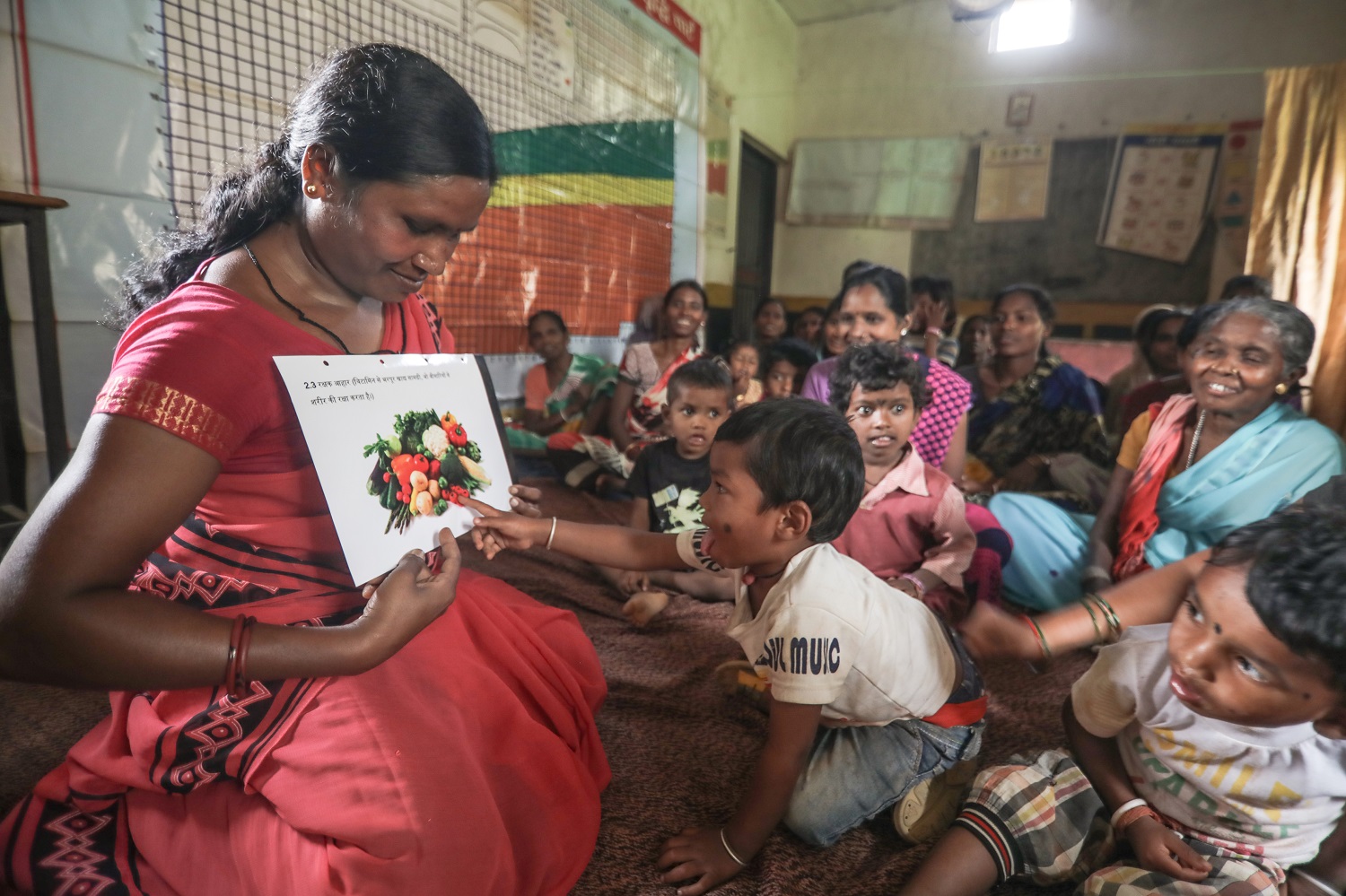
State-wise coverage of food supplementation during pregnancy, in 2006 and 2016 (image courtesy: POSHAN team)
An IFPRI study on the equity and extent of coverage of India’s Integrated Child Development Services (ICDS) programme was recently published in the Bulletin of the World Health Organization. The study has revealed that expansion and utilization of this government-run community-based nutrition program increased significantly between 2006 and 2016, especially among historically disadvantaged castes and tribes. However, women with low education and the poorest households are relatively more excluded from accessing program benefits. Among states too, while overall utilization has improved, high malnutrition states are relatively lagging.
This study is the first, in a long time, to offer an in-depth empirical analysis of the utilization of ICDS program, which continues to be India’s flagship program to tackle undernutrition. Key actions under India’s new nutrition mission, the POSHAN Abhiyaan, are anchored in the program. It provides food, pre-school education, and primary healthcare to children under six and pregnant and lactating women. The expanded participation between 2006 and 2016, as revealed by National Family Health Survey (NFHS) data, demonstrates progress across the board and in every state. However, the study clearly demonstrates that not all groups have benefited equally.
The study found a dramatic increase in utilization of ICDS services from 2006 to 2016 in four key areas: supplementary food (9.6 to 37.9 percent); health and nutrition education (3.2 to 21 percent); health check-up (4.5 to 28 percent); and child-specific services (10.4 to 22 percent). The frequency of monthly supplementary food for children also increased during this period by eight percentage points.
At the state level, the study highlights an increase in utilization of ICDS services between the two survey rounds. With the exception of Tamil Nadu, Chhattisgarh and Jharkhand, the coverage of food supplementation during pregnancy and lactation was less than 25 percent in most states in 2006. This increased in almost all states by 2016. The greatest expansion in ICDS services was seen in food supplementation during childhood, which reached more than 50 percent in the central and southern states of Jharkhand, Madhya Pradesh, Uttaranchal, Tamil Nadu and Andhra Pradesh. Detailed district-wise coverage of core ICDS interventions during pregnancy, lactation and early childhood in 2016, based on NFHS-4 data, can be found in IFPRI’s Data Note.
Media coverage of the study focused mainly on the exclusions and attempted to interpret some of the changes we found. Here’s a view of some of the media coverage:
- IndiaSpend - India’s Poorest Women Benefit Less From Public Health, Nutrition Services
- The Hindu - Anganwadi services yet to reach poorest of poor, uneducated mothers
- The Indian Express - India’s nutrition programme excludes poorest households: Study
- The Economic Times - India's child nutrition programme excludes poorest households: Study
- The Hans India - ICDS ‘inadvertently’ excluding disadvantaged women, poor: Study
- MediBulletin - Women, poor missing out on nutrition efforts under ICDS
- Down To Earth - Integrated Child Development not serving those who need it the most, finds study
- The New Indian Express - Poorest excluded in India's nutrition programme: International Food Policy Research Institute
On a more positive note, an op-ed by Uma Mahadevan, former Principal Secretary in-charge of the ICDS in Karnataka, referenced this paper and brought a note of hope to the potential role of ICDS. In addition, a thoughtful piece on what it would take to strengthen ICDS, by V. Ramani, the architect of the Maharashtra Nutrition Mission, digs into the details on what it would take to really make ICDS work more strongly.
Taken together, our analysis and these additional pieces in the media come at a time when Government of India’s POSHAN Abhiyan is celebrating its first anniversary. Fortnight-long activities are being organized under Poshan Pakhwada across the country, from 8th to 22nd March 2019, to mark this event. It is an opportune time to applaud some of the positive findings of this analysis on coverage and closing of some equity gaps. At the same time, it is clear that a focus on the insights provided by these findings and analyses by senior bureaucrats can help to further strengthen the ICDS program’s coverage and quality.
Given the significant implementation challenges, such as state-level implementation, decentralization, population size and diversity, financial constraints and community awareness, the large-scale expansion in ICDS in India is laudable. It seems India is well on its way to scale up at least some key nutrition-specific interventions using ICDS. Examining the reasons for variability in program-use by program clients, both across and within states, must underpin policy efforts to strengthen its coverage, equity and quality.


